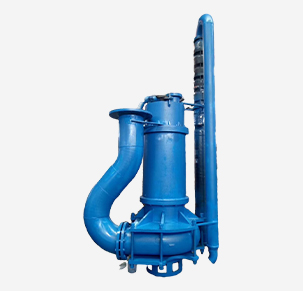Malayalam
- Afrikaans
- Albanian
- Amharic
- Arabic
- Armenian
- Azerbaijani
- Basque
- Belarusian
- Bengali
- Bosnian
- Bulgarian
- Catalan
- Cebuano
- Corsican
- Croatian
- Czech
- Danish
- Dutch
- English
- Esperanto
- Estonian
- Finnish
- French
- Frisian
- Galician
- Georgian
- German
- Greek
- Gujarati
- Haitian Creole
- hausa
- hawaiian
- Hebrew
- Hindi
- Miao
- Hungarian
- Icelandic
- igbo
- Indonesian
- irish
- Italian
- Japanese
- Javanese
- Kannada
- kazakh
- Khmer
- Rwandese
- Korean
- Kurdish
- Kyrgyz
- Lao
- Latin
- Latvian
- Lithuanian
- Luxembourgish
- Macedonian
- Malgashi
- Malay
- Malayalam
- Maltese
- Maori
- Marathi
- Mongolian
- Myanmar
- Nepali
- Norwegian
- Norwegian
- Occitan
- Pashto
- Persian
- Polish
- Portuguese
- Punjabi
- Romanian
- Russian
- Samoan
- Scottish Gaelic
- Serbian
- Sesotho
- Shona
- Sindhi
- Sinhala
- Slovak
- Slovenian
- Somali
- Spanish
- Sundanese
- Swahili
- Swedish
- Tagalog
- Tajik
- Tamil
- Tatar
- Telugu
- Thai
- Turkish
- Turkmen
- Ukrainian
- Urdu
- Uighur
- Uzbek
- Vietnamese
- Welsh
- Bantu
- Yiddish
- Yoruba
- Zulu
Telephone: +86 13120555503
Email: frank@cypump.com
സെപ് . 28, 2024 22:23 Back to list
SALA Slurry Pumps Overview and Applications in Various Industries
Understanding Sala Slurry Pumps A Comprehensive Overview
Sala slurry pumps are an essential piece of equipment widely used in various industries for handling abrasive and viscous materials. These pumps are specifically designed to move mixtures of solid particles and liquids, known as slurries, efficiently and effectively. This article provides an overview of Sala slurry pumps, their applications, design features, and benefits, helping to elucidate why they are a preferred choice in many industrial settings.
Applications of Sala Slurry Pumps
Sala slurry pumps are primarily used in the mining, mineral processing, and construction industries. In mining operations, they are often employed to transport materials like tailings, which are the by-products of mining processes. These pumps can also be found in applications dealing with coal, cement, and other bulk materials, where the handling of thick, heavy slurries is a common requirement.
In addition to the mining sector, Sala pumps are crucial in the wastewater treatment industry, where they are used to transport settled sludge and other heavy materials. Their ability to handle a wide range of slurry characteristics, including pH variations and solid content, makes them highly versatile for many industrial applications.
Design Features of Sala Slurry Pumps
One of the most significant advantages of Sala slurry pumps is their robust design. These pumps are constructed with wear-resistant materials to withstand the abrasive nature of slurries. The impeller is specially engineered to optimize hydraulic performance while minimizing wear and prolonging the pump's life. The materials commonly used in the construction of Sala pumps include high-chromium alloy and elastomers, making them durable and efficient.
Furthermore, Sala slurry pumps feature a unique hydraulic design that enables them to operate efficiently in high-flow and high-head conditions. The pumps are typically designed with a wide range of impeller sizes and configurations, allowing for adaptability to different operating requirements and slurry types.
sala slurry pumps

The pump's casing is another critical aspect of its design. Sala pumps often come with a split casing design, which allows for easy maintenance and accessibility. This means that wear parts can be replaced with ease, minimizing downtime and ensuring continuous operation in demanding environments.
Benefits of Using Sala Slurry Pumps
The use of Sala slurry pumps presents numerous benefits to industries requiring effective slurry management. Firstly, their robust design not only enhances durability but also reduces lifecycle costs due to lower maintenance needs. With proper care, these pumps can provide years of reliable service, making them a cost-effective investment for companies.
Secondly, Sala slurry pumps are known for their high efficiency. Their hydraulic design allows them to transport slurries at lower energy consumption, leading to reduced operational costs. This efficiency is particularly valuable in industries where energy costs can significantly impact overall expenses.
Moreover, the versatility of Sala slurry pumps is a tremendous advantage. They can handle a variety of slurries with different characteristics, making them suitable for multiple applications across different sectors. This adaptability allows operators to streamline their processes without needing multiple types of pumps for various tasks.
Conclusion
In summary, Sala slurry pumps are an indispensable tool in various industries, providing an effective solution for the transportation of abrasive and viscous materials. Their robust design, efficient operation, and versatility make them the preferred choice for handling slurries in mining, wastewater treatment, and construction applications. As industries continue to evolve, the demand for reliable and efficient slurry management solutions like Sala pumps will undoubtedly grow, reinforcing their position in the market as a vital component of modern industrial processes.
-
ISG Series Vertical Pipeline Pump - Chi Yuan Pumps Co., LTD.|High Efficiency, Low Noise, Durable
NewsAug.02,2025
-
ISG Series Vertical Pipeline Pump - Chi Yuan Pumps | High Efficiency, Low Noise
NewsAug.02,2025
-
ISG Series Vertical Pipeline Pump- Chi Yuan Pumps Co., LTD.|High Efficiency&Compact Design
NewsAug.02,2025
-
Heavy-Duty Mining Sludge Pumps - Wear-Resistant Slurry Handling
NewsAug.02,2025
-
Horizontal Split Case Pump with GPT-4 Turbo | High Efficiency
NewsAug.01,2025
-
ISG Series Pipeline Pump - Chi Yuan Pumps | High Efficiency, Durable Design
NewsAug.01,2025










